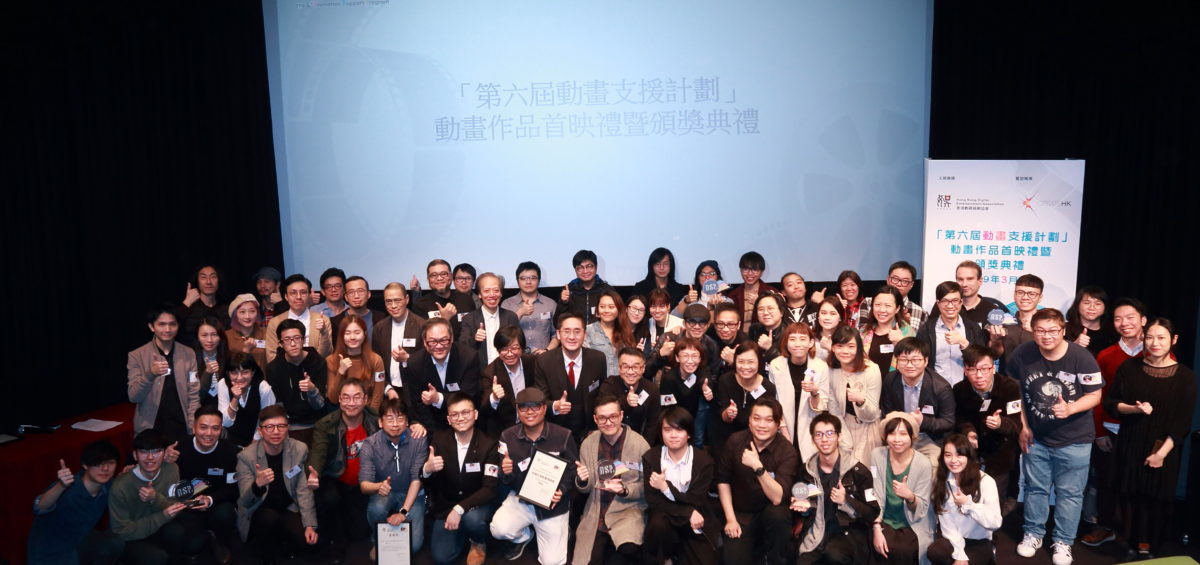Lo is an experienced anime producer and began independent anime creation in 1977. His works won the first prize at the Hong Kong Independent Short Film Festival for four consecutive times and he was promoted as panel member. In the next year, he joined the Radio Television Hong Kong to work as cartoon producer until 1993. Over recent years, he spent efforts on promotion of the anime industry in Hong Kong and planning of anime exhibitions. Recently, he worked as the curator of the 50 Years of Hong Kong and Taiwanese Animation. He currently worked as Secretary General of the Hong Kong Animation and Culture Association.
The sixth Animation Support Programme (ASP) has recently come to an end in April. Launched in 2012, ASP is a representative support programme in Hong Kong that aims to support local start-ups and small-sized companies with high potential in the animation sector. The sixth edition of the ASP has achieved a record-high performance since 2012.
I have talked about the ASP before. What makes the sixth edition different is that this time ASP features three categories of participants, with the newly-added Tier 3 of small animation enterprises in advance production. The Tier 3 enjoys a funding of HKD500,000, a few times larger than the HKD105,000 and HKD198,000 from the Tier 1 and Tier 2 respectively. But the competition is fierce as there are only four slots. Despite the limited number of slots, the number of applicants increased. The sixth edition of ASP eventually selected 22 out of over 70 applicants and provided them with six months to complete their projects.
A disclaimer here. I want to stress that it is only my personal perception that this edition of ASP has produced the best result in its history. Personally speaking, I firstly expected ASP’s participants to be more diverse in terms of animation technology they adopt and the themes under which they produce their animation. Secondly, I also looked at the participants’ performance when they were trying to get into a higher tier. Lastly, I evaluated the productions’ potential. Most of the animations from the sixth edition of ASP have met these standards. It’s really exhilarating!

First, we have the most ambitious animation Another World by Point Five Creations. This hand-painted 2D animation has a sound and solid script. The 15-minute long animation tells a story about the cycle of life, coupled with stylish aesthetics and professional voice acting and music. It is a quality animation from many aspects. Another World is definitely a cost-effective project as it successfully produced an amazing result with only a budget of HKD500,000. The story is actually an intro of a seven-episode animation series, which is absolutely exciting.
Balance Breakers from Gamestry Lab is a Tier 2 production selected by the ASP. The animation is 3D-illustrated and is based on Gamestry Lab’s self-developed game title. It is an intro of a game-like animation series. Balance Breakers uses characters and world settings from the game and turn them into animation with its own story while maintaining the quality features of the original game, especially the delicate art designs. This successful production will make the audience immediately fall in love with the animation. In addition, the animation also helps promote the original game for the game studio.
Lion Verse from Spicy Banana Creations is a non-narrative animation that is based on iconic photos of Hong Kong. Inspired by renowned photographer Ho Fan’s portfolios, the animation showcases images and visuals of Hong Kong in the postwar period and the city’s subsequent development. The animation was produced with a massive volume of images and videos, which took the production team quite a lot of efforts to collect. The final product is an authentic showcase of Hong Kong.
A-BEAN’s Blackout is an animation produced with motion graphics. The animation is showcased in colour blocks and flat motion graphics, a technique that is usually adopted for showing instruction or information. Blackout tells several mini stories that happened during a massive blackout in the city. It is a sentimental animation coming out of a unique attempt. Blackout not only succeeds in its quality result but also serves as a good example of using motion graphic techniques in animation.
Step C. is an independent animator based in Hong Kong. Her last animation Toxic Relationships received countless awards. This time, she combines stop motion animation with 2D hand-painted characters and brings out a new animation called Little Thinks. The cute animation leads the audience to see the interesting aspects of everyday life through the eyes of small insects. It is a childlike animation with poetic visual effects.
The last animation that I want to introduce in this article is Cyko Production’s Haru and Furi 2 – Great Adventure into the Bird-Man Kingdo. As its title implies, it is an action animation. The animation series has in fact built up its popularity. A number of fan merchandise based on the two main characters, the fox and the rabbit, have also entered the market. The production team has invested a lot of efforts in refining the animation’s story and the motion production, making the animation even more funny, especially for younger viewers. Haru and Furi is one of the emerging IPs from Hong Kong.
The six animations I mentioned in this article have screened at the Macao Contemporary Art Centre’s multimedia exhibition in May this year. The directors of these amazing animations had a sharing with the audience and professional talents from Macao’s animation industry during the event. These animations are also available for watching on Animation Support Programme’s official website (www.animation-ssp.com/zh/showcase6).